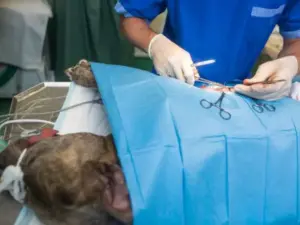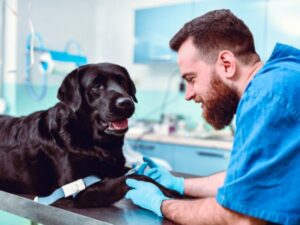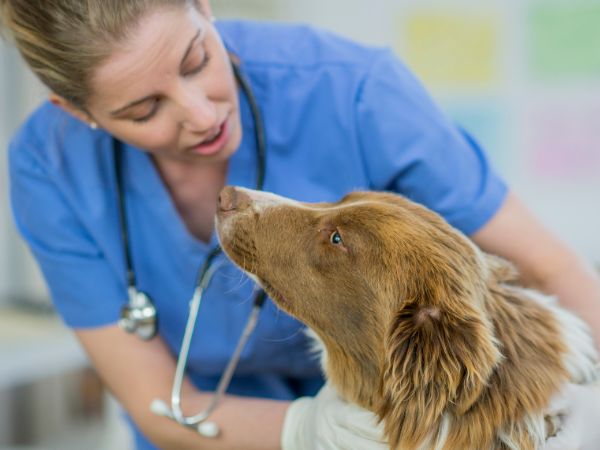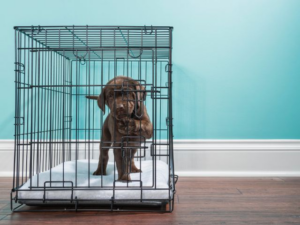Spaying and neutering are important procedures performed on dogs to control their population and improve their overall health and behavior. Apart from population control and health advantages, spaying and neutering contribute to the overall welfare of dogs.
By preventing unwanted litters, these procedures reduce the number of animals ending up in shelters or being euthanized due to overpopulation. They also promote responsible pet ownership and help to prevent the spread of genetic disorders and hereditary diseases.
Click here to read about cropping Rottweiler ears.
Click here to read up on Cane Corso Rottweiler Mix.
What is Spaying and Neutering?
Surgical Sterilization
Surgical sterilization is the removal intra-abdominal reproductive organs (in whole or in part), rendering animals unable to produce young. All forms of surgical sterilization need to be undertaken under general anesthesia. In some cases, your veterinarian will recommend that your pet has blood work prior to the surgery, but this is not always deemed necessary.
Ovariohysterectomy or “spay” refers to the surgical removal of the entirety of the intra-abdominal reproductive organs (the ovaries, fallopian tubes and uterus) from a female pet. Traditional spaying is undertaken via laparotomy, and will require an abdominal incision site of around 1-10 inches depending on the size of the dog, and the skill of the surgeon.
With a keyhole spay, the surgical procedure is carried out through a very tiny incision using specialist equipment. Only a veterinarian with additional training and expertise is able to carry out keyhole procedures. Your pet will require pain medication post-op with either type of spay, although the recovery period is shorter and more comfortable following a keyhole procedure.
Orchiectomy, also called “castration” or “neutering” refers to the removal of the testes from a male dog. The scrotum is left in-situ, and the egg-shaped testes are removed through a small incision (usually 1-2 inches) made just above the scrotum, on your dog’s lower abdomen.
 Alternative Surgical Methods of Spaying and Neutering
Alternative Surgical Methods of Spaying and Neutering
Hysterectomy (females): with a hysterectomy, both the uterus and a portion of the fallopian tubes are removed. However, the ovaries remain. This technique will not eliminate behaviors associated with sex hormones and breeding instincts.
Ovariectomy (females): an ovariectomy is the removal of both ovaries, leaving the uterus in place. Removal of the ovaries renders reproduction impossible, as well as eliminating the heat cycle and breeding instinct related behaviors.
Vasectomy (males): vasectomy is the surgical removal of a portion of the vas deferens (the tube which conducts sperm from the testes to the outside world). This procedure is unlikely to reduce behaviours associated with sex hormones or breeding instinct in male dogs.
Non Surgical Sterilization of Male Dogs
If your dog exhibits certain behavioral problems, your veterinarian may recommend a “trial” period with a birth control implant before you decide on permanent, surgical sterilization for your male pet.
Removal of the testes results in a drastic and permanent reduction in your male pet’s testosterone levels, and testosterone provides a significant confidence boost. So, if your dog displays fear-related aggression, or nervousness around new people or situations, it may be better to test the waters with non surgical sterilization first.
Benefits of Spaying and Neutering Your Dog
A common question encountered by veterinary professionals is: “Why spay?”
Pet owners should be aware that there are many health benefits to the procedure, as well as a few risks.
For starters, your pet dog or cat can expect to enjoy a longer life following sterilization. Spayed and neutered dogs have demonstrated an increase lifespan [1]; a clear benefit for your pet!
Serious health problems can also be prevented by spay or neuter surgery. Overiohysterectomy and hysterectomy both prevent uterine infections in female cats and dogs, as well as other animals. Neutering eliminates the risk of testicular cancer, as neutered male dogs no longer possess testicles, and spaying (when undertaken in a timely manner) can reduce your dog’s risk of mammary (breast) cancer.
Furthermore, neutering reduces the risk of developing an enlarged prostate gland due to benign prostatic hyperplasia. However, whilst neutered dogs will be less at risk from developing benign prostatic hyperplasia, they may be at a greater risk of developing anal sac adenocarcinomas, a cancer of the anal glands [2] [3].
So, neutering a male pets can have some downside. Neutering male cats on the other hand does not appear to increase the risk of anal sac adenocarcinoma.
In some cases, neutering may reduce or eliminate certain behaviour problems in your dog, including urine marking, aggression (often directed at other males, but may also be directed towards female dogs or humans), roaming, mounting and other unwanted behaviors. Do be aware however that these undesirable behaviors have often become psychologically ingrained to some extent by the time a dog reaches adulthood, so sometimes the behavior problems will persist despite sterilization.
Finally, one of the main reasons that sterilization of pets is recommended as standard is that the procedure prevents unwanted litters of puppies and kittens. A reduction in unwanted puppies and kittens in turn reduces pet overpopulation, which is currently a colossal issue with most rescue centres bursting at the seams with unwanted pets.
 When Should You Spay or Neuter Your Dog?
When Should You Spay or Neuter Your Dog?
In order to make an informed decision, pet owners should be familiar with the following considerations when deciding when to undertake spaying or neutering of their dogs.
Male dogs may be more likely to develop certain orthopedic conditions if a neuter surgery is carried out prior to the completion of skeletal development. Large and giant breed dogs tend to mature more slowly than smaller breeds, and are more prone generally to orthopedic conditions. As such, male dogs (especially larger breeds) should not be neutered until they are fully grown and their skeletons fully developed.
The “traditional age” for neutering a female dog is typically quotes as being 6-9 months, however a female dog can certainly be spayed as early as 16 weeks. Animal shelters will often spay and neuter dogs at a very early age as standard, prior to rehoming.
There are pros and cons to spaying a female dog before or after her first heat cycle (estrus). Spaying before the first estrus provides the greatest overall lifelong reduction in risk of developing breast cancer, but on the flip side early spaying has been linked to an increased risk of urinary incontinence.
Average Cost to Get a Dog Spayed
The cost of spaying will vary dramatically depending on geographical location and veterinary provider. It is also likely to vary depending on the size of your pet, typically costing more for larger dogs.
Generally, spaying is a relatively low cost surgery as most veterinary providers want to make the procedure affordable to encourage pet owners to sterilize their dogs, thereby improving animal health and reducing pet overpopulation.
Your veterinarian will be able to advise on their surgery fees for your pet.
 Can You Spay a Dog in Heat?
Can You Spay a Dog in Heat?
A skilled and experience veterinarian can spay a dog in heat, however it is certainly not recommended and (unless there’s a medical reason why your dog must be spayed without delay) it is safer to wait until you dog is mid-way between heat cycles. There is a significantly increased risk of complications, most notably hemmorhage (blood loss), when a spay is performed whilst a dog is in heat.
Is it Necessary to Spay a Female Dog?
In modern times spaying is a very safe and relatively low cost procedure, and every veterinarian will agree that spaying is highly beneficial for nearly every dog. The procedure will decrease the risk of a number of important health issues and increase your pet’s lifespan. Whilst some owners hesitate due to a desire to prevent weight gain (which can occur in male and female dogs post-sterilzation), this is very simple to prevent by adjusting your pet’s diet appropriately following the surgery.
Prevent Health Problems and Enhance Behavioral Patterns from Spaying and Neutering
In conclusion, spaying and neutering are vital components of responsible pet ownership, offering a multitude of benefits including population control, improved health outcomes, and enhanced behavioral patterns. By opting for these procedures, we create a safer, healthier, and happier life for our beloved canine companions, while also contributing to the well-being of the larger dog community.
Click here to read about long hair Rottweilers.
You can also read up on Chihuahua Rottweiler Mix.
Reference List:
[1]. Hoffman, J.M., Creevy, K.E. and Promislow, D.E.L. Reproductive Capability Is Associated with Lifespan and Cause of Death in Companion Dogs. Plos One. (2013)
[2]. Goldschmidt, M.H. and Hendrick, M.J. Tumors of the skin and soft Tissues. Tumors in Domestic Animals. (2008)
[3]. Ross, J.T., Scavelli, T.D., Metthiesen, D.T., Patnaik, A.K. Adenocarcinoma of the apocrine glands of the anal sac in dogs: A review of 32 cases. Journal of Am Anim Hosp Assoc. (1991)

 Can You Spay a Dog in Heat?
Can You Spay a Dog in Heat?










